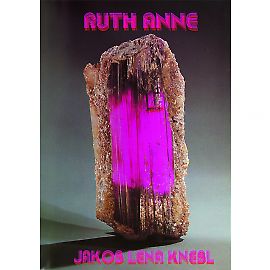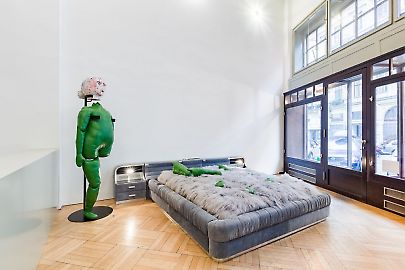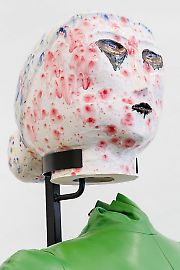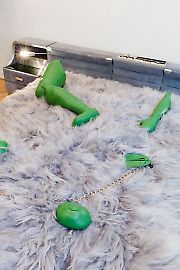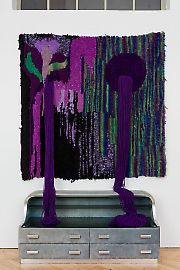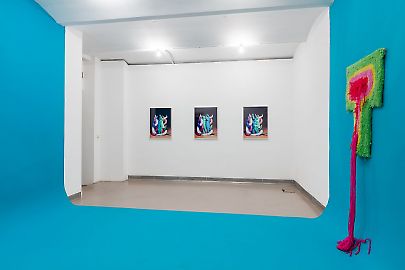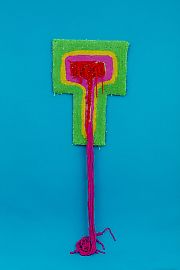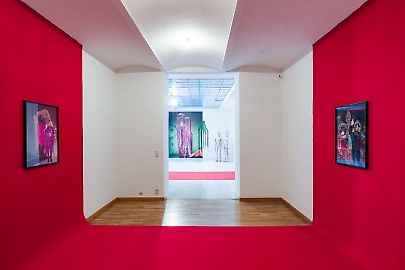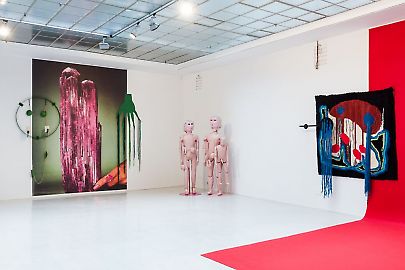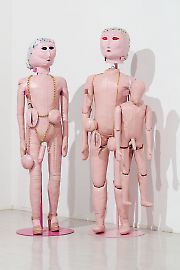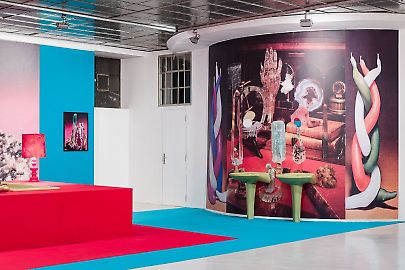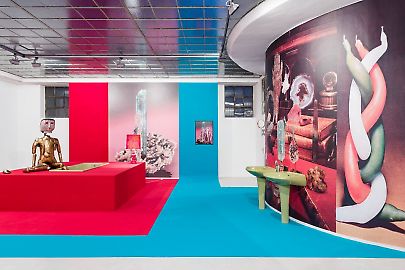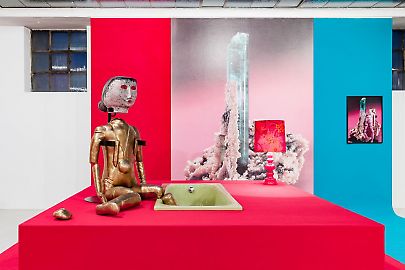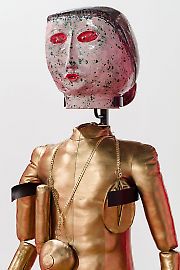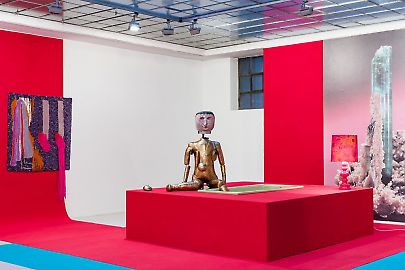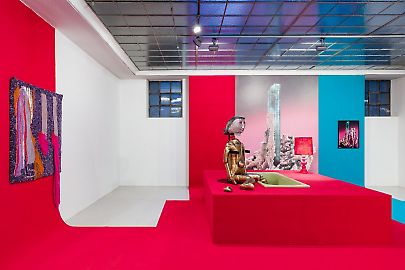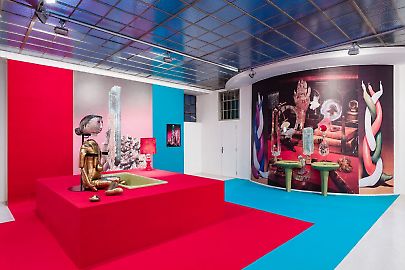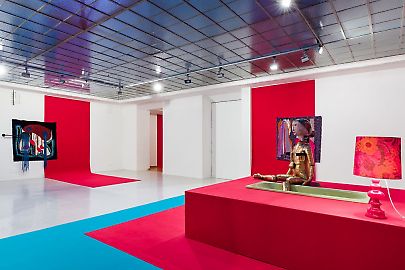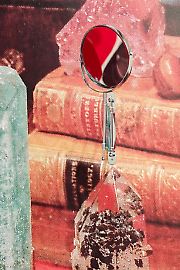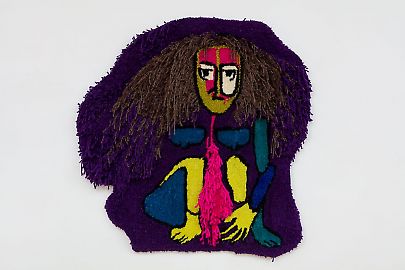Jakob Lena Knebl -- Ruth Anne
Interview with Martha Kirszenbaum (MK) and Jakob Lena Knebl (JLK)
MK: Could you say a few words about how this new exhibition came together? I see two core elements in it: the importance of craft and of the domestic setting, connecting the private space with the public.
JLK: In my work I am inspired by different fields of art and design history. I am creating scenographic settings, including furniture, lamps, wallpaper and carpets connecting and interlocking the private with the public. When we visit an exhibition, we are first searching for recognizable elements and nothing is nearer to this than our body and the private surroundings.
MK: Looking back at your practice, I’ve been intrigued by the particular relationship between design and the representation of the body. Is it something that comes from your background as a fashion designer student?
JLK: My design studies at Raf Simons have certainly had an influence.
MK: Again here, we see a strong fascination for the fetishization of objects and bodies.
JLK: I am interested in alternatives to normative and commercialized desire. Objects are also bodies in space. They bear the potential of having a strong effect on the bodies of the visitors. Concerning desire, fetishism is a very interesting driver in our relation to bodies, materials and things in general. It is the moment of fetishistic desire when things have an intense effect on our identities. Traditionally seen as a perverted object-subject relationship.
MK: You often mention radical humor and grotesque, alongside the influence of French filmmaker Louis de Funès.
JLK: I grew up with Louis de Funès films on TV. They had a strong impact on myself, especially the combination of grumpiness and humor. I am working with aesthetics and humor to create an unusual approach to political topics. The idea is to work with low barriers and accessibility. In addition, humor is not something you usually bring together with women. I see myself as a trickster.
MK: How do you negotiate the balance between your interest in the mainstream hetero-normative culture or masculine energy and the gender fluidity your practice conveys?
JLK: This is precisely what my work is about. To stay in this ambiguity and paradox.
To be political it makes no sense for me to stay within the elitary confines.The Beatles were mainstream; Gender bender glamrock and pop were mainstream too;
Space age design and so on. Concerning gender topics it is important for me to include heterosexual desire and class.
MK: This is of course your solo exhibition at the gallery, but could you elaborate on the role of collaborations in your practice, notably with Ashley Hans Scheirl ?
JLK: In my role as an artist/curator the collaboration with other artists, curators and manufacturing companies, like the design label House of the Very Island´s, is an important tool for me to challenge and transform myself. Parallel to my show in the main gallery, I also curated a show of BRUCE! in the 'Georg Kargl Box', as I appreciate his genius record cover drawings and working class topics.
MK:You recently acted as a curator for an exhibition at MUMOK in 2017 where you were invited to reflect on the collection and arrange a large variety of works from it. Could you share a bit more about this experience?
JLK: In the MUMOK show I chose works form their collection and entangled them with my own work in a very personal approach. As we are always inspired by other works, contexts, topics it makes sense for me to make this fact visible. But also to discover new things is very exciting and has a big effect on me. The show worked with the idea of clusters. I used different 'tactics' (Michel de Certeau) in every scenographic cluster. The aim was to present things in a different way and to produce a new kind of visibility. Works from the collection were placed side-by-side with design pieces, works from contemporary artists and my own work. A democratic way of exhibiting.
At the moment I am preparing my next show at Lentos museum in Linz, where I also entangle works from the collection with my own works. I am currently also working on an extensive exhibition which will take place at Musée d'Art et d'Histoire in Geneve later this year.


